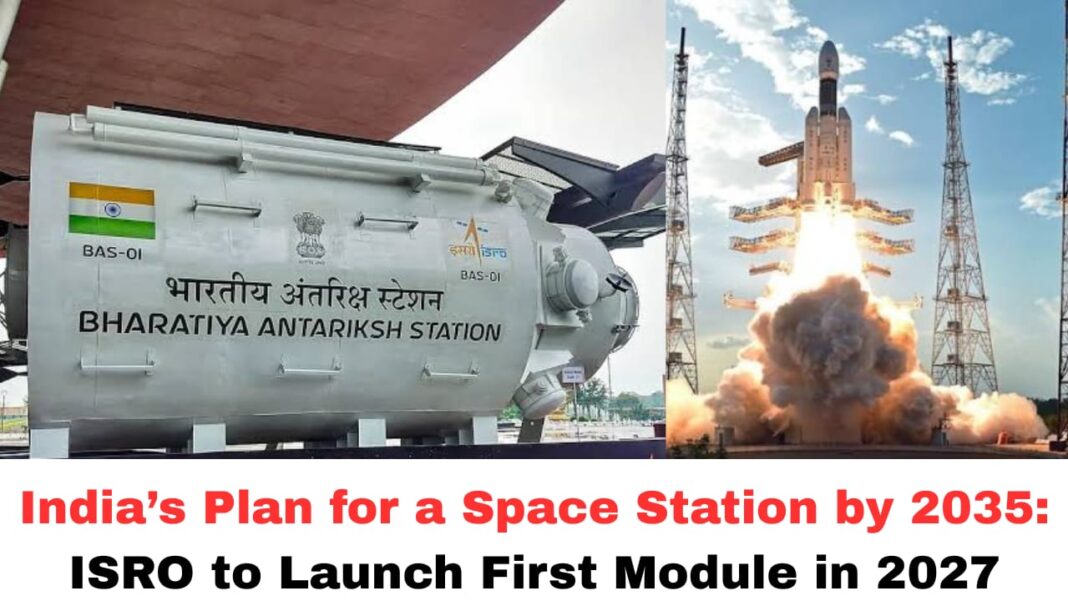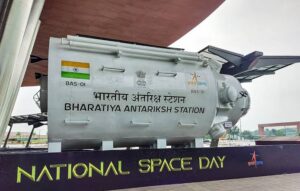Digital News Guru Technology Desk:
India will have its own space station by 2035, says ISRO chief
India is charting an ambitious trajectory in space exploration. On the path laid out by ISRO (Indian Space Research Organisation), the country plans to launch its first space station module around 2027–2028, with the goal of having a fully operational Indian space station—named Bharatiya Antariksha Station (BAS)—by 2035.
Key Announcement & Context
- At the 14th convocation of IIT-BHU in Varanasi, ISRO Chairman V. Narayanan announced that India aims to establish its own space station by 2035, with initial modules to be launched beginning around 2027.

- In that address, he also outlined other upcoming projects such as Chandrayaan-4 and Chandrayaan-5, and the ongoing Gaganyaan-3 mission.
- The idea is to build a self-sustaining space ecosystem in India, where space applications (telecom, remote sensing, disaster management, etc.) support national development.
What the Proposed Space Station (BAS) Entails
- The term under discussion is Bharatiya Antariksh Station (BAS) — a modular Indian space station project.
- According to sources, the station would have a mass of about 52 tonnes, orbit at ~400–450 km, and would support a crew of 3–4 (nominally, up to 6 for short durations).
- The first module (often called BAS-1) is expected to be launched around 2028 under present plans, with remaining modules following until 2035.
- The station is proposed to use LVM3 / LVM3-SC launch vehicles for module launches.
- It is also envisioned to include 5 modules connected by docking/berthing mechanisms: base, core, science, laboratory, and a common working module.
Timeline, Challenges & Risks
- Timeline:
2027: First module(s) launch window mentioned by ISRO chief.
• 2028: Many plans point to BAS-1 module launch.
• 2035: Targeted completion for the full station. - Technical & Financial Hurdles:
Designing life support systems, docking mechanisms, structural stability, power, orbital maintenance — these are all nontrivial for a modular station.
• Integration with existing and future launchers (LVM3, next-gen rockets) and ensuring reliability of crewed missions.
• Sustained funding over a decade on stretches of high-risk engineering.
• Managing delays common to space projects (payload readiness, delays, testing). - Dependencies:
The success of Gaganyaan (India’s human spaceflight program) is closely tied to preparations for longer duration stays in orbit.
• Collaboration with private space sector and possible international partnerships.
What This Means — Why It Matters
- Having its own space station would elevate India’s status in the global space community — going from satellite launch & planetary missions to sustained human presence in orbit.
- It would create a platform for long-term research in microgravity, life sciences, space experiments, materials science, etc.
- It also builds autonomy — India wouldn’t be entirely dependent on foreign stations or infrastructure for crewed missions or experiments.
- A successful execution would demand consistent policy support, sustained funding, and resilience to setbacks.
Key Opportunities & Strategic Importance
- Scientific Research Platform: Once operational, BAS will enable long-duration scientific experiments in microgravity—including life sciences, biotechnology, materials science, astronomy, Earth observation, etc.
- Technological Autonomy and Capability Building: Developing human-rated modules, environmental control and life support systems (ECLSS), docking/berthing mechanisms, and heavier launch vehicles will enhance India’s technological base.
- Geopolitical Leverage: As the International Space Station (ISS) is expected to be decommissioned by ~2030, India’s station could fill a growing gap. Having an independent station enhances India’s visibility in space diplomacy and collaboration.
- Inspiration & Ecosystem Growth: The project is likely to boost India’s space startup sector, create high-skilled jobs, encourage partnerships between academia and the industry, and strengthen STEM education.
Conclusion
The announcement that India aims to launch its first space station module by 2027–28, with a goal of full station operations by 2035, is more than a statement of intent—it’s a declaration of India’s aspirations to be among the world’s leaders in human spaceflight and orbital research. The Bharatiya Antariksha Station is expected to be a milestone in India’s journey toward scientific self-reliance, technological maturity, and space diplomacy.
Whether India succeeds will depend not just on rockets and modules, but on ecosystems: of engineers, scientists, industry, regulatory support, financing, and international collaboration. If India pulls this off, BAS will be a crown jewel in its space programme—and a giant leap for its ambitions in space.
You May Also Read: PM Modi Inaugurates Major Projects Worth Rs 13,430 Crore in Kurnool, Andhra Pradesh










